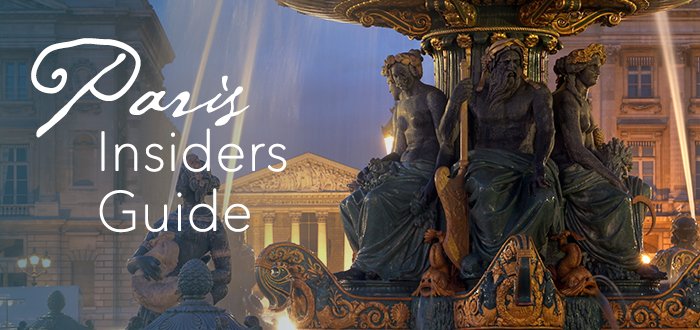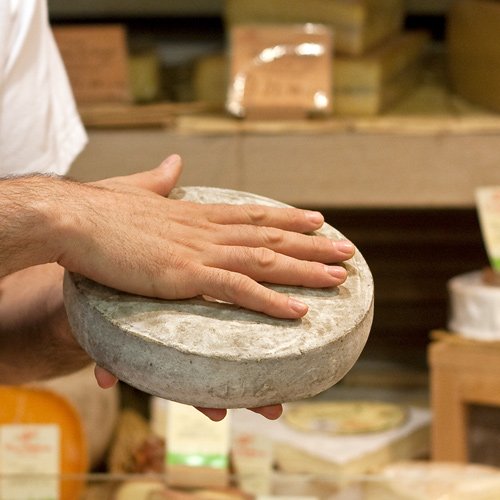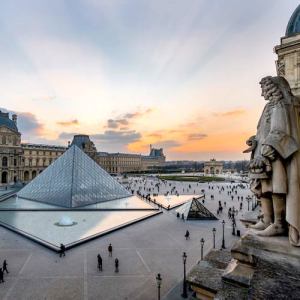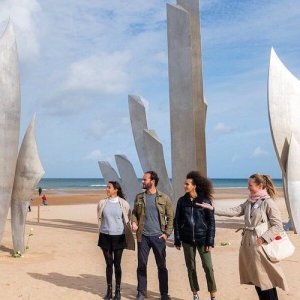Discover 6 Treasures Of Greek & Roman Art At The Louvre
If you love ancient art & history, then join us on a virtual walk among some of the classical sculptures in the Louvre. The museum's collection of art from Greece, Italy, and the Mediterranean basin spans from Neolithic times (the 4th millennium BCE) to the 6th century CE.
![]()
Our Top-Rated Museum Tours in Paris
1. Louvre 2-Hour VIP Tour… This small-group option is the best experience
2. 3-Hour Louvre Semi-Private Tour… Feel like a VIP on a small group tour
3. Musée d'Orsay Impressionist Tour… The top-rated museum tour in Paris
4. The Paris Museum Pass… Free entry to over 60 museums and monuments
More Than the Venus de Milo
 Two Venuses – d'Arles and de Milo, photo by Mark Craft
Two Venuses – d'Arles and de Milo, photo by Mark Craft
You may already be familiar with some of the major highlights to be found in this department of the Louvre — the Nike of Samothrace, Venus de Milo, the warm humanism of the Etruscan Sarcophagus of the Spouses. But, there's a lot to explore in this extensive collection. to help you explore a little bit more deeply, here are six other ancient artworks you may not be as familiar with, but worth seeking out on your next visit to the Louvre.
![]()
Discover What's On When You're Here...
• January... |
• February... |
• March... |
• April... |
• May... |
• June... |
• July... |
• August... |
• September... |
• October... |
• November... |
• December... |
Discover What's On When You're Here
• January...
|
• February... |
• March... |
|---|---|---|
• April... |
• May... |
• June... |
• July... |
• August... |
• September... |
• October... |
• November... |
• December... |
Six Ancient Reasons to Go to The Louvre
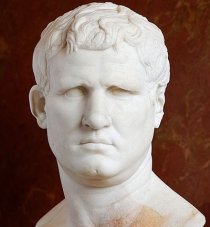
|
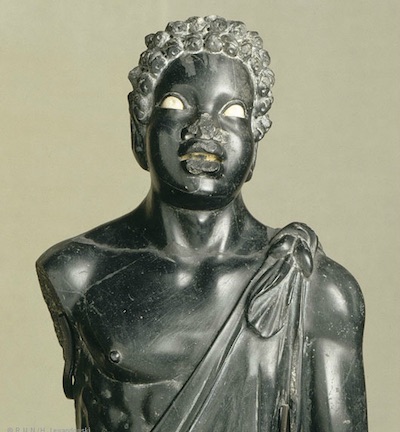
|
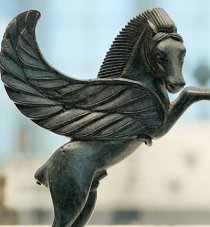
|

|

|

|
1. Agrippa – 25 to 24 BCE
The stern face is Agrippa, Roman general and son-in-law of emperor Augustus. There were many statues of him erected around the Roman Empire; it's believed this bust is modeled from an original large bronze that had a prominent place in the Roman Pantheon in about 25 BCE. This sculpture was discovered in 1792 in Prince Camille Borghese's villa and was acquired by Napoleon in 1807 along with the entire Borghese collection. Located in the Denon Wing, Room 23.
2. Young Slave – Late 2nd to Early 3rd Century CE
Discovered in the ancient baths of Aphrodisias in what is now Turkey, the decorative statuette in black marble shows evidence of the taste for the exotic in the Roman Empire. The statuette depicts a a young slave wearing a short tunic gathered at the waist and fastened over his shoulder; in his left hand he holds a flask of perfumed oil. Ethiopian slaves often worked in the baths during the late second and early third centuries BCE.
3. Winged Horse – 4th Century BCE
The small, bronze, winged horse was discovered during excavations of the temple to Zeus at Dodona, in northwestern Greece. The horse's long wings represent Pegasus, the mythical horse that sprung from the blood of Medusa. The sculpture has a twin that mirrors it, today found i the Greek National Museum in Athens. Together, they formed a symmetrical pair that were probably used to decorate the handles of a vase dedicated to Zeus. Located in the Sully Wing, Room 32.
![]()
Experience the Splendor Of Versailles
|
Versailles with Priority Access + Gardens |
Half-Day, Skip-the-Line Tour of Versailles |
|
Versailles with Priority Access + Gardens |
![]()
 Artemis, Goddess of the Hunt, photo Wikimedia by Jastrow
Artemis, Goddess of the Hunt, photo Wikimedia by Jastrow
4. Artemis, Goddess of the Hunt – 4th Century BCE
The Greek goddess Artemis — Diana to the Romans — was the twin sister of Apollo. Artemis is shown in action, with her tunic tucked to her knees to make it easier to hunt. A cape is flung over her left shoulder and it clings to show her strong, athletic figure. The classic, natural drapery of her clothes and her proud majesty suggests the statue is from the Second Classical Period of the 4th century BCE.
The statue was a gift from Pope Paul IV to Henri II (1519-1559) and was one of the earliest ancient statues to come to France. Once arrived the statue moved around a lot. At first she was in the Jardin de la Reine and at Fontainebleau. In 1602 Henri IV moved Artemis to the Hall of Antiquities at the Louvre (now the Salle des Caryatides). Louis XIV sent her to Versailles to stand in the Grande Galerie. In 1798, post-Revolution, she returned to the Louvre.
5. Etruscan Vase in the Form of a Woman's Head
The craftsmanship is Etruscan, but the form is borrowed from Hellenistic Greek vessels. The vase probably held ointment used in funeral rituals. It was made in the 3rd century BCE in a workshop in Orvieto in Umbria, a place famous for bronze craftsmanship. Many similar vases have been found near graves in the area. Denon Wing, Room 19.
6. Hera of Samos
Otherwise known as the Kore of Samos, this headless female figure was once part of the temple of Hera on the island of Samos and arrived at the Louvre in 1881. It had been discovered near the temple on the Via Sacra in 1875. The monumental statue of a young girl (kore) wearing a finely-pleated linen tunic and wool cloak & veil is typical of the Archaic style. In case you've forgotten your Ancient Greek art history, archaic korai are statues that depict girls and women, always of a young age, made during the Archaic period, 600 to 480 BCE.
There is an engraved inscription along the edge of the veil, describing the statue as an offering to Hera; other works from Samos have similar inscriptions. The young woman once held a key to the temple of Hera in her hand. Located in the Denon Wing, Room 1.
![]()
Top-Rated Paris Museum Tours
|
The Louvre's Greatest Masterpieces |
Musé d'Orsay Guided Tour |
|
The Louvre's Greatest Masterpieces |
The Louvre's Department of Greek, Roman & Etruscan Art
 Nike of Samothrace atop the Daru Staircase, photo Wikimedia by Marie-Lan Nguyen
Nike of Samothrace atop the Daru Staircase, photo Wikimedia by Marie-Lan Nguyen
At its opening in 1793, the Louvre contained only two departments — Paintings and Antiquities; that is, Greek, Etruscan, and Roman antiquities. The collections were enriched considerably by artwork seized from the nobility during the French Revolution and, later, by Napoleon Bonaparte.
In 1807, when the Louvre (in the person of Napoleon) purchased five hundred marble sculptures from the Borghese collection in Rome, the Salle des Cariatides on the ground floor of the Pavillon du Roi (wing of the Louvre) and the Queen's Winter Apartments were refurbished to make space for them. In 1815, Ennio Quirino Visconti, an Italian art historian and the Louvre's first curator of antiquities, added acquisitions, with the Venus de Milo arriving in 1821. Further archaeological artifact acquisitions meant more space was needed; in 1827, the Musée Charles X opened on the first floor.
![]()
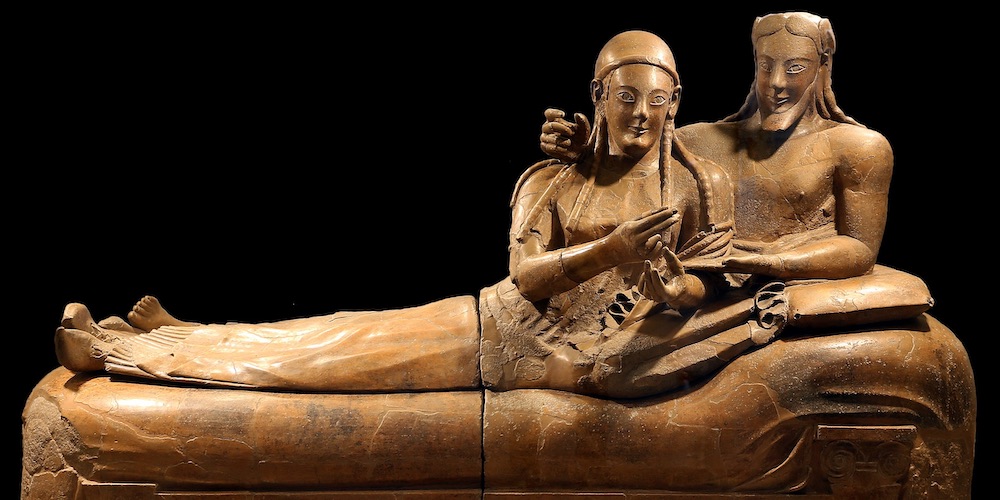
![]()
During the 19th century, the Louvre's acquisitions from North Africa and the Ottoman Empire increased dramatically, the result of a frenzy of archaeological expeditions. The Nike of Samothrace was discovered and was placed on the summit of the Daru staircase in 1884.
By the early 20th century there was a need to revise and expand. In 1934 the museum of sculpture that had been inaugurated by Napoleon was dismantled; in its place a chronological classification was established. A section devoted to Greek art was centered on the sculptures in the Queen's Winter Apartment, AKA the Salle de Diane. After the Louvre Pyramid was built in the late 20th century, a new organizational project was launched. The pre-classical Greek gallery opened and a new room under the Winged Victory staircase was devoted to the Temple of Zeus.
![]()
Find Hotel Deals for Your Dates in Paris
Check the complete list of Paris hotels to find current sale prices on rooms in every arrondissement. Save 10%, 20%… or even more! |
Paris Hotel Deals |
Find Hotel Deals for Your Dates in Paris
Save on hotels in every arrondissement of Paris – the Latin Quarter, Saint Germain, the Right Bank, the Marais, near the Eiffel Tower. Save 10%, 20%… or even more! |
How to Avoid Languishing in a Long Louvre Line
If you've ever visited a large museum, you'll know that museum fatigue is real.There's so much ground to cover, so much art to look at and experience. And that's after you've spent an hour or more in line waiting to get in.
Why not visit the Louvre the Paris Insiders way — signing up for a skip-the-line tour with an expert guide. That way you bypass the lineups and go directly to the Mona Lisa (or wherever). And, after the tour is over, you're free to spend as much additional time as you like in the museum.
Links to the 8 Departments of the Louvre
| • Egyptian Antiquities… | • Greek & Roman Art… |
| • Near Eastern Antiquities… | • Islamic Art… |
| • Paintings… | • Sculptures… |
| • Decorative Arts… | • Prints & Drawings… |
Paris Planning Guides
 Latin Quarter Hotels
Latin Quarter Hotels |
 Historic D-Day Tours
Historic D-Day Tours |
 Glorious Dinner Cruises
Glorious Dinner Cruises |
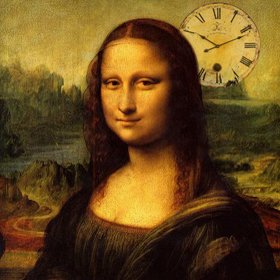 Skip-the-line Louvre Tour
Skip-the-line Louvre Tour |

